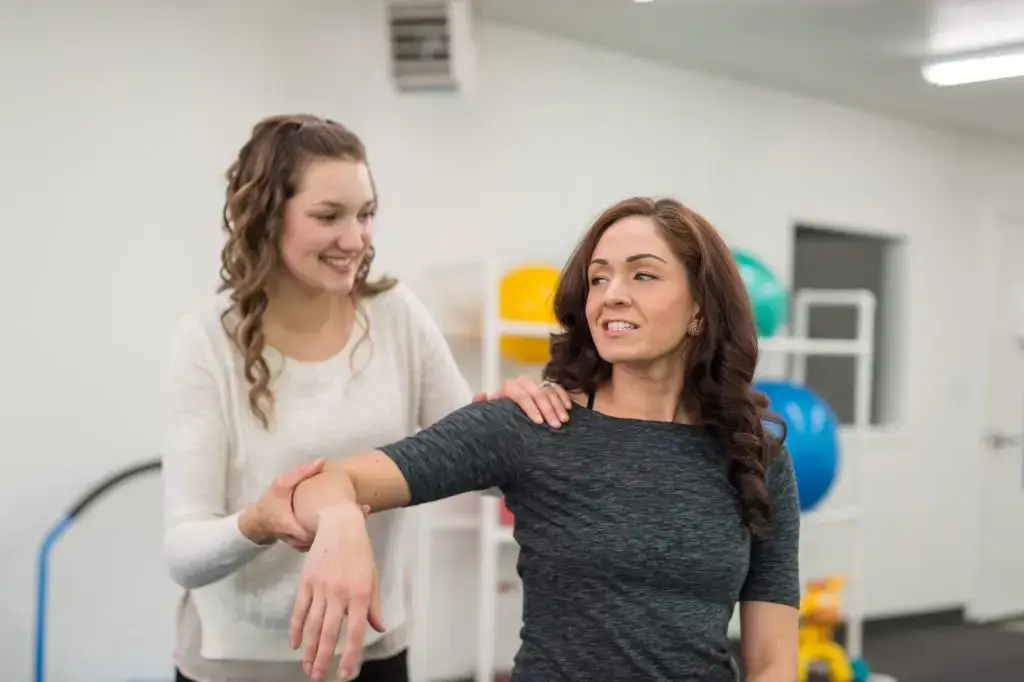One of the foundational techniques of physical therapy is joint mobilization. For centuries, helping people move, position, and stretch their joints after an injury or medical procedure has been shown to improve outcomes in ways a person may not be able to accomplish on their own.
What is joint mobilization?
When you picture a physical therapy session, you probably picture a person holding someone’s leg in the air, helping them flex their elbow, or pressing on a part of their shoulder. These are all examples of hands-on joint mobilization, a fundamental method of manual physical therapy.
But the simplicity of joint mobilization shouldn’t be taken for granted. The direction, force, speed, and repetition of joint mobilization are all factors to consider when administering treatment, which is why not just anyone can provide scientifically sound physical therapy.
Our physical therapists utilize a highly specific, evidence-based approach to joint mobilization based on the orthopedic manual physical therapy (OMPT) system, which requires two years of residency specialization in advanced training for manipulation of the limbs and spine.
Conditions joint mobilization can treat
Nearly any muscular or joint injury or condition can benefit from manual joint mobilization, although there are cases where it’s not recommended. This is why, even for the most seemingly straightforward conditions, our physical therapists carefully evaluated each patient, including their medical history, to ensure their treatment plan is suited for their condition and goals.
We use joint mobilization most often for conditions like:
- Arthritis
- Rotator cuff injuries
- Frozen shoulder
- Ankle sprains
- Golfer’s elbow
- Tennis elbow
- Sciatica pain
- Carpal tunnel syndrome
- Whiplash
- Spinal alignment issues
A common theme across all of these different areas is damage to the underlying joint structures, whether in the muscle or ligaments, due to specific injury or general wear and tear. Joint mobilization helps people find relief by releasing tension, reducing fluid accumulation (edema), reducing inflammation, and strengthening the damaged tissues.
What to expect from your physical therapy appointment
As part of a comprehensive physical therapy plan, you will always receive an evaluation and examination at your first appointment, whether you scheduled your own appointment or are following up on a referral. This assessment will include a medical history as well as a physical examination of the affected area: your range of motion, experience of pain, coordination ability, strength, and posture.
Out of this examination, you’ll create a physical therapy plan with your provider, including additional treatments you want to try, that typically results in an appointment schedule of a few visits each week in addition to stretches or exercises for you to do at home.
Joint mobilization may cause discomfort during each treatment, but it shouldn’t result in long-lasting, worsened pain. Your physical therapist will consistently ask how you’re feeling, both during and after each session, to make sure you’re as comfortable as possible.
Find long-term relief with physical therapy
No matter your condition or how long you’ve been dealing with it, we want to help. Learn more about your options for physical therapy, including time-tested techniques like joint mobilization, by calling one of our nearby clinic locations or requesting an appointment online today.

